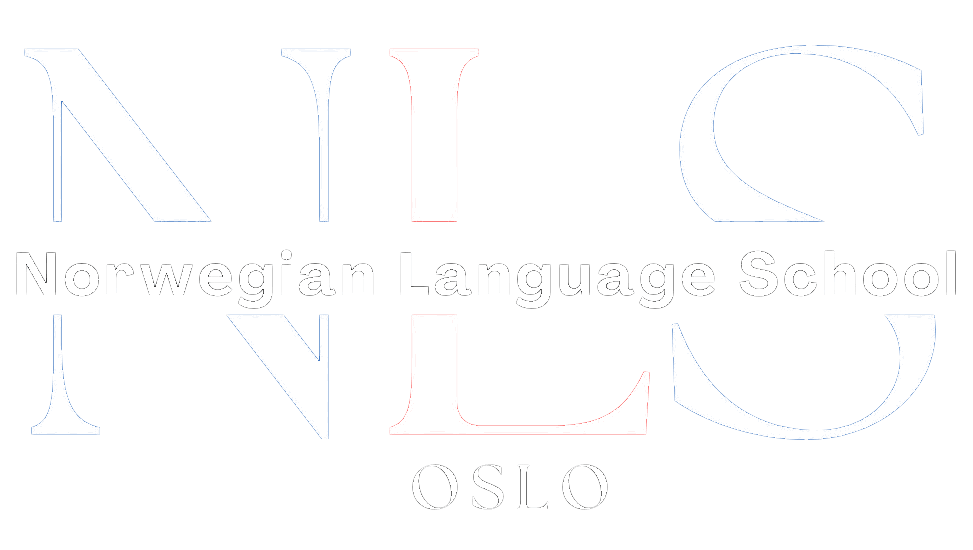

Discovering Norwegian: Enhancing Your Trips and Work Opportunities
Have you ever thought about how learning the basics of Norwegian can improve your travel experiences and job prospects in Norway? Although many Norwegians speak excellent English, starting with Norwegian for beginners helps you truly connect, whether you’re exploring fjords or looking for work.
Norway is renowned for its breathtaking scenery and robust economy, making it an attractive destination for visitors and residents alike. Knowing some essential Norwegian vocabulary can significantly improve your experience.
Table of Contents
ToggleWhy Learn Basic Norwegian Phrases?
Learning Norwegian opens doors to understanding the rich culture of Northwestern Europe. The similarities between English and Norwegian make it relatively easy to learn, paving the way for further language learning in Scandinavia.
Norwegian grammar and pronunciation are straightforward, making it perfect for a quick start. Basic greetings like “Hei,” “Hallo,” and “God dag” are essential for making friends and starting conversations.
Using travel phrases in Norwegian can enhance your trips. Knowing how to order food, ask for directions, and make purchases can be very helpful. Saying thank you in different ways, like “Takk,” “Mange takk,” and “Tusen takk,” is appreciated. Remember to say “Takk for maten” after a meal.
Conversational Norwegian helps in daily situations. With practice, these words become second nature. You’ll feel more comfortable with the language around you.
Many Norwegians speak good English because they watch foreign shows in the original language. However, they appreciate it when visitors make an effort to speak Norwegian. This shows respect and can lead to deeper friendships and cultural understanding.
Understanding cultural nuances in Norwegian is crucial. Words like “Vær så snill” (please) and “Hyggelig” (nice) enhance the tone of conversations.
Taking a crash course in Norwegian and learning basic travel phrases will improve your trip. It aids communication and deepens your understanding of Norwegian culture.
Essential Phrases for Greetings
Adding common Norwegian phrases to your conversations can improve your time in Norway. Greetings are a significant part of being polite. Knowing and using basic Norwegian greetings can make a positive first impression and lead to friendships with locals. Here are some key phrases:
Hello: The word “Hallo” is common for greeting people in various settings.
Hi: “Hei” is a casual way to say hi.
Good morning/Good evening: Use “God morgen” (Good morning) and “God kveld” (Good evening) to show respect for the time of day.
Goodbye: “Ha det” is a casual way to say goodbye, while “Farvel” is more formal.
Good night: “God natt” is used when wishing someone a good night.
Common Norwegian Expressions for Politeness
Being polite is essential in Norway. Learning words like “please,” “thank you,” and “you’re welcome” makes daily interactions smoother.
Please: “Vær så snill” helps keep conversations polite.
Thank you: Express gratitude with “Takk,” “Takk skal du ha,” “Mange takk,” and “Tusen takk.” After a meal, say “Takk for maten.”
You’re welcome: “Vær så god” is the response to thank you.
Excuse me: “Unnskyld” or “Unnskyld meg” works for getting someone’s attention or apologizing.
Sorry: “Beklager” is the way to apologize.
Here’s a table with key polite words:
| English Phrase | Norwegian Phrase |
|---|---|
| Please | Vær så snill |
| Thank you | Takk, Mange takk, Tusen takk |
| You’re welcome | Vær så god |
| Excuse me | Unnskyld |
| Sorry | Beklager |
Introducing Yourself in Norwegian
Introducing yourself is crucial in any new language, including Norwegian. These phrases help you start conversations with locals:
What’s Your Name?: “Hva heter du?” is how to ask someone’s name.
My Name Is: “Jeg heter…” followed by your name. For example, “Jeg heter Chris.”
Nice to Meet You: “Hyggelig å møte deg” shows you’re pleased to meet someone.
How are you?: “Hvordan har du det?” shows you care about someone’s well-being.
I’m fine: “Jeg har det bra” is a common response.
Where are you from?: “Hvor er du fra?” helps you learn more about someone and share cultural stories.
I am from…: “Jeg er fra…” followed by your country or city.
Travel Phrases in Norwegian
Knowing basic travel phrases makes navigating Norway easier and enhances your trip:
Where is the bathroom?: “Hvor er badet?” is essential for finding restrooms.
May I sit here?: “Kan jeg sitte her?” is a polite way to ask for a seat in public places.
How much does this cost?: “Hvor mye koster dette?” helps with shopping and budgeting.
Where is…?: “Hvor er…?” followed by the place you’re looking for.
Can you help me?: “Kan du hjelpe meg?” is useful in many situations.
I don’t understand: “Jeg forstår ikke” helps when you’re confused.
Can you speak English?: “Kan du snakke engelsk?” is useful if you’re struggling with Norwegian.
I need…: “Jeg trenger…” followed by what you need.
| English Phrase | Norwegian Phrase | Context |
|---|---|---|
| Where is the bathroom? | Hvor er badet? | Restaurants, public places |
| May I sit here? | Kan jeg sitte her? | Cafes, public spaces |
| How much does this cost? | Hvor mye koster dette? | Shops, markets |
| Where is…? | Hvor er…? | Asking for locations |
| Can you help me? | Kan du hjelpe meg? | Seeking assistance |
| I don’t understand | Jeg forstår ikke | Expressing confusion |
| Can you speak English? | Kan du snakke engelsk? | Checking for English speakers |
| I need… | Jeg trenger… | Expressing needs |
Conversational Phrases for Making Friends
Making friends in Norway is easier with these phrases:
How are you?: “Hvordan har du det?” shows you care about someone’s well-being.
I’m fine: “Jeg har det bra” is a common response.
Where are you from?: “Hvor er du fra?” helps you learn more about someone and share cultural stories.
What do you do?: “Hva jobber du med?” helps you learn about someone’s occupation.
Do you have any hobbies?: “Har du noen hobbyer?” is great for finding common interests.
Norwegian Phrases for Dining Out
These phrases make dining out more enjoyable:
Can I have the menu, please?: “Kan jeg få menyen, vær så snill?” shows respect and interest in the language.
I would like to order: “Jeg vil gjerne bestille” indicates you’re ready to choose your meal.
The bill, please: “Kan jeg få regningen, vær så snill?” is useful for wrapping up your meal.
What do you recommend?: “Hva anbefaler du?” helps you explore new dishes.
Is this dish spicy?: “Er denne retten sterk?” helps you manage your preferences.
Shopping Phrases in Norwegian
Shopping is more fun with the right phrases:
How much does this cost?: “Hvor mye koster dette?” is essential for price inquiries.
Do you accept credit cards?: “Tar dere kredittkort?” ensures you can pay easily.
Can I try this on?: “Kan jeg prøve dette på?” is handy when shopping for clothes.
Do you have this in another size?: “Har du dette i en annen størrelse?” helps you find the right fit.
Where is the fitting room?: “Hvor er prøverommet?” is essential for trying on clothes.
| Scenario | Norwegian Phrase | English Translation |
|---|---|---|
| Inquiring about Prices | Hvor mye koster dette? | How much does this cost? |
| Payment Methods | Tar dere kredittkort? | Do you accept credit cards? |
| Trying on Items | Kan jeg prøve dette på? | Can I try this on? |
| Finding Sizes | Har du dette i en annen størrelse? | Do you have this in another size? |
| Locating Fitting Rooms | Hvor er prøverommet? | Where is the fitting room? |
Survival Norwegian Phrases for Emergencies
These phrases are vital in emergencies:
- Help!: “Hjelp!”
- Can you help me?: “Kan du hjelpe meg?”
- I need a doctor: “Jeg trenger lege”
- Call the police: “Ring politiet”
- I am sick: “Jeg er syk”
- Emergency exit: “Nødutgang”
- Where is the nearest hospital?: “Hvor er nærmeste sykehus?”
- I have lost my passport: “Jeg har mistet passet mitt”
- Fire!: “Brann!”
- I need an ambulance: “Jeg trenger ambulanse”
| Phrase in Norwegian | Translation in English | Context of Use |
|---|---|---|
| Hjelp! | Help! | General emergency |
| Kan du hjelpe meg? | Can you help me? | Requesting assistance |
| Jeg trenger lege | I need a doctor | Medical emergency |
| Ring politiet | Call the police | Need police assistance |
| Jeg er syk | I am sick | Feeling unwell |
| Nødutgang | Emergency exit | Finding exits |
| Hvor er nærmeste sykehus? | Where is the nearest hospital? | Locating medical facilities |
| Jeg har mistet passet mitt | I have lost my passport | Loss of important documents |
| Brann! | Fire! | Fire emergency |
| Jeg trenger ambulanse | I need an ambulance | Medical emergency |
Expressions for Apologies and Excuses
Being able to apologize correctly strengthens social bonds:
I’m sorry: “Beklager” or “Jeg beklager” are common ways to apologize.
Excuse me: “Unnskyld meg” works for getting attention or excusing yourself.
I apologize: “Jeg beklager” is suitable in both formal and casual settings. For a more heartfelt apology, say “Unnskyld, jeg er virkelig lei for det.”
Pardon me: “Unnskyld” can be used to ask someone to repeat something or to pass by them.
| English Phrase | Norwegian Translation |
|---|---|
| I’m sorry | Beklager, Jeg beklager |
| Excuse me | Unnskyld meg |
| I apologize | Jeg beklager |
| Excuse me, I am really sorry | Unnskyld, jeg er virkelig lei for det |
| Pardon me | Unnskyld |
Numbers and Counting in Norwegian
Learning numbers is crucial for daily life:
Basic Numbers:
- 1 – en/ett
- 2 – to
- 3 – tre
- 4 – fire
- 5 – fem
- 6 – seks
- 7 – sju/syv
- 8 – åtte
- 9 – ni
- 10 – ti
Counting Objects: For “two apples,” say “to epler.”
Time and Dates: For numbers over 100, use “and” (“og”). For example, “110” is “hundreogti.”
| Number | Norwegian | Number | Norwegian |
|---|---|---|---|
| 1 | en/ett | 11 | elleve |
| 2 | to | 12 | tolv |
| 3 | tre | 13 | tretten |
| 4 | fire | 14 | fjorten |
| 5 | fem | 15 | femten |
| 6 | seks | 16 | seksten |
| 7 | sju/syv | 17 | sytten |
| 8 | åtte | 18 | atten |
| 9 | ni | 19 | nitten |
| 10 | ti | 20 | tjue |
Common Questions and Responses
Basic questions and responses help in everyday interactions:
Who? What? Where? When? Why?:
- Who?: “Hvem?”
- What?: “Hva?”
- Where?: “Hvor?”
- When?: “Når?”
- Why?: “Hvorfor?”
Yes and No:
- Yes: “Ja”
- No: “Nei”
How much?: “Hvor mye?” For example, “How much does this cost?” is “Hvor mye koster det?”
Do you understand?: “Forstår du?” is useful for checking comprehension.
I understand: “Jeg forstår” indicates you got it.
I don’t understand: “Jeg forstår ikke” helps when you’re confused.
| English Phrase | Norwegian Phrase | Context |
|---|---|---|
| Who? | Hvem? | Asking about people |
| What? | Hva? | Asking about things |
| Where? | Hvor? | Asking about places |
| When? | Når? | Asking about time |
| Why? | Hvorfor? | Asking about reasons |
| Yes | Ja | Affirmative response |
| No | Nei | Negative response |
| How much? | Hvor mye? | Inquiring about cost |
| Do you understand? | Forstår du? | Checking comprehension |
| I understand | Jeg forstår | Indicating understanding |
| I don’t understand | Jeg forstår ikke | Expressing confusion |
Vocabulary List
Here’s a helpful vocabulary list to enhance your Norwegian learning:
| English | Norwegian |
|---|---|
| Please | Vær så snill |
| Thank you | Takk, Mange takk, Tusen takk |
| You’re welcome | Vær så god |
| Hello | Hallo |
| Hi | Hei |
| Goodbye | Ha det, Farvel |
| Good morning | God morgen |
| Good evening | God kveld |
| Good night | God natt |
| My name is | Jeg heter |
| How are you? | Hvordan har du det? |
| I’m fine | Jeg har det bra |
| Where are you from? | Hvor er du fra? |
| I am from… | Jeg er fra… |
| Where is the bathroom? | Hvor er badet? |
| May I sit here? | Kan jeg sitte her? |
| How much does this cost? | Hvor mye koster dette? |
| Do you accept credit cards? | Tar dere kredittkort? |
| Can I try this on? | Kan jeg prøve dette på? |
| Help! | Hjelp! |
| Can you help me? | Kan du hjelpe meg? |
| I need a doctor | Jeg trenger lege |
| Call the police | Ring politiet |
| I am sick | Jeg er syk |
| Emergency exit | Nødutgang |
| Where is the nearest hospital? | Hvor er nærmeste sykehus? |
| I have lost my passport | Jeg har mistet passet mitt |
| Fire! | Brann! |
| I need an ambulance | Jeg trenger ambulanse |
| I’m sorry | Beklager, Jeg beklager |
| Excuse me | Unnskyld meg |
| I apologize | Jeg beklager |
| Pardon me | Unnskyld |
| 1 | en/ett |
| 2 | to |
| 3 | tre |
| 4 | fire |
| 5 | fem |
| 6 | seks |
| 7 | sju/syv |
| 8 | åtte |
| 9 | ni |
| 10 | ti |
| Who? | Hvem? |
| What? | Hva? |
| Where? | Hvor? |
| When? | Når? |
| Why? | Hvorfor? |
| Yes | Ja |
| No | Nei |
| How much? | Hvor mye? |
| Do you understand? | Forstår du? |
| I understand | Jeg forstår |
| I don’t understand | Jeg forstår ikke |
With these Norwegian basics, you’ll have a smoother and more enjoyable stay in Norway.

Norwegian A1-A2
Course Overview The Norwegian A1-A2 course is an online program focused on teaching essential Norwegian grammar and vocabulary. It includes a variety of materials and topics, with opportunities to interact with a Norwegian teacher entirely online. Curriculum Highlights The course covers key areas such as grammar and vocabulary and topics such as family, daily life, education, work, traditions, and leisure activities. Who Should Enroll? This course is perfect for beginners or those at the A1 or A2 levels who want to improve their Norwegian skills. What You Get Access to the full Norwegian A1-A2 course. A monthly 1-hour online conversation with a teacher. Many written and oral assignments. Comprehensive information on Norwegian grammar, Norwegian vocabulary and how to use them, important sentence structures, etc. Tips on additional resources to further enhance your Norwegian learning.
0 students enrolled
Last updated Dec 10th, 2024
If you want to learn Norwegian, you can register for classes here. We look forward to hearing from you and helping you become fluent in Norwegian.






